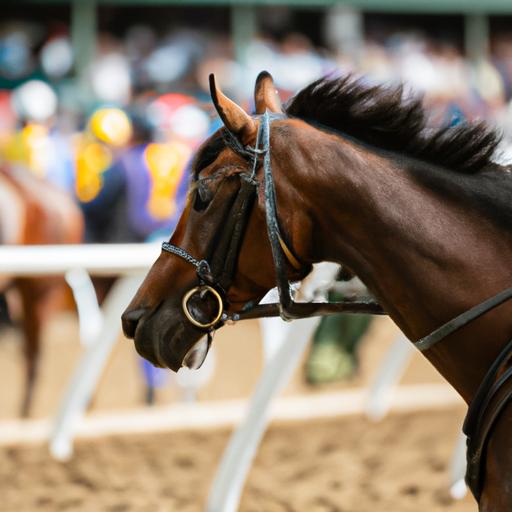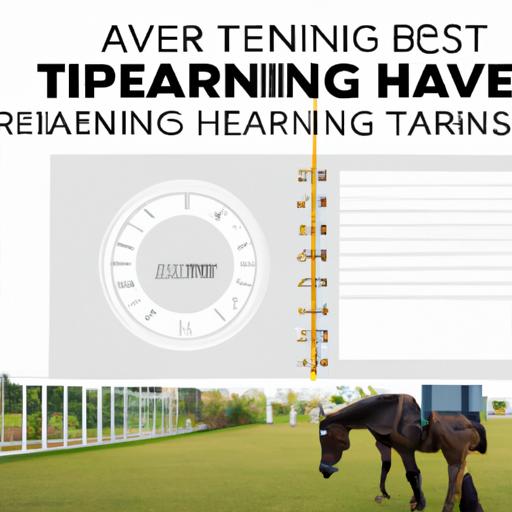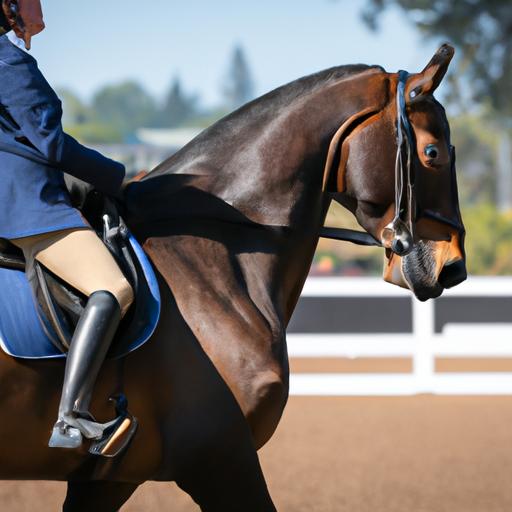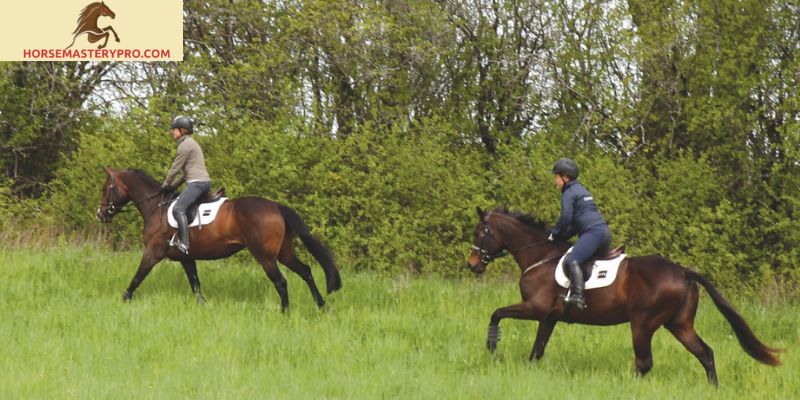Discover the key to success with an effective event horse training schedule. Learn how to assess fitness levels, set goals, and determine training frequency.
As an aspiring event horse rider, have you ever wondered what sets apart the champions from the rest of the field? The secret lies not only in the horse’s natural talent but also in the meticulous planning and execution of a well-structured training schedule. Welcome to Horsemasterypro.com, where we delve into the world of event horse training schedules and unveil the key to unlocking your horse’s true potential.
A. Importance of a well-structured event horse training schedule
Just like an architect needs a blueprint to construct a masterpiece, a well-structured event horse training schedule serves as your roadmap towards success. It provides you with a clear vision, guiding your training sessions and ensuring every step taken aligns with your goals. Without a schedule, you risk haphazard training, leading to inconsistency, frustration, and even setbacks in your horse’s progress.
B. Overview of the benefits of following a training schedule
Imagine embarking on a journey without a map or GPS. You would feel lost, unsure of which direction to take. Similarly, a training schedule provides you with a sense of direction, allowing you to track your horse’s progress and make necessary adjustments along the way. By adhering to a well-structured training schedule, you reap numerous benefits, including:
- Efficiency: A schedule helps you make the most of your training time, focusing on specific exercises and areas that require improvement. No more wasted sessions or aimless wandering in the arena.
- Consistency: Consistency is key in event horse training. By following a schedule, you establish a routine that helps your horse develop muscle memory, promoting better performance during competitions.
- Progressive Development: A training schedule allows you to gradually increase the difficulty and intensity of exercises, ensuring your horse’s physical and mental capabilities grow over time.
- Injury Prevention: By incorporating rest and recovery periods into your schedule, you give your horse’s body time to recuperate, reducing the risk of overexertion and injuries.
Now that we understand the importance and benefits of a well-structured event horse training schedule, let’s delve deeper into the elements that make up an effective training program. Join me in Section II, where we explore the fundamentals of event horse training and set the foundation for your horse’s success.
Understanding the Basics of Event Horse Training

A. Definition and Purpose of Event Horse Training
Event horse training is the process of preparing a horse for the demanding sport of eventing, which combines dressage, show jumping, and cross-country. It involves developing the horse’s physical fitness, agility, and obedience to perform at its best in each phase of the competition. The ultimate goal of event horse training is to create a well-rounded athlete capable of excelling in all three disciplines.
In eventing, precision, athleticism, and harmony between horse and rider are paramount. Dressage tests the horse’s suppleness, obedience, and precision of movements, while show jumping challenges their ability to clear obstacles with precision and agility. The cross-country phase tests their endurance, bravery, and ability to navigate challenging terrain and obstacles.
B. Key Components of a Successful Event Horse Training Program
To build a successful event horse training program, several key components must be incorporated:
1. Foundation in Dressage
Dressage forms the foundation of eventing, enhancing the horse’s balance, suppleness, and obedience. It strengthens their ability to perform precise movements and transitions, enabling them to execute intricate dressage tests with elegance and grace.
2. Show Jumping Technique
Show jumping requires careful training to develop the horse’s ability to jump with accuracy, technique, and scope. Exercises that focus on developing a rhythmic canter and improving the horse’s understanding of distances and angles are crucial for success in this phase.
3. Cross-Country Endurance and Skill
Cross-country training is the heart of eventing, testing the horse’s bravery, stamina, and ability to navigate challenging terrains and obstacles. Conditioning exercises, gallop sets, and simulated cross-country courses help build the horse’s fitness, confidence, and competence in tackling varied cross-country challenges.
4. Fitness and Conditioning
A well-conditioned horse is better equipped to handle the physical demands of eventing. Incorporating regular fitness and conditioning exercises into the training program helps develop the horse’s cardiovascular strength, muscle tone, and overall endurance.
5. Proper Warm-up and Cool-down
A thorough warm-up and cool-down routine are essential for preventing injuries and promoting optimal performance. Gentle stretches, loosening exercises, and walking sessions before and after intense training sessions help prepare the horse’s muscles and joints, reducing the risk of strain or stiffness.
By understanding the fundamentals of event horse training and incorporating these key components into your program, you lay a solid foundation for success. Join me in Section III, where we delve into the process of designing an effective event horse training schedule.
Designing an Effective Event Horse Training Schedule

To truly unlock your horse’s potential and achieve remarkable results, designing an effective event horse training schedule is paramount. In this section, we will explore the key steps involved in creating a schedule that maximizes your horse’s abilities and facilitates their growth.
A. Assessing the horse’s current fitness level and abilities
Before embarking on any training program, it is crucial to assess your horse’s current fitness level and abilities. This evaluation allows you to understand their strengths, weaknesses, and areas that require improvement. By recognizing their starting point, you can tailor the training schedule to their specific needs, ensuring a progressive and effective approach.
B. Setting specific goals and objectives for the training schedule
To stay on track and ensure measurable progress, it is essential to establish specific goals and objectives for your horse’s training schedule. These goals can include improving dressage movements, enhancing show jumping technique, or increasing endurance for cross-country courses. By setting clear and attainable targets, you provide yourself with a roadmap for success and can track your horse’s development along the way.
C. Determining the appropriate duration and frequency of training sessions
Finding the right balance between training duration and frequency is crucial for your horse’s overall well-being and progress. It is important to consider their fitness level, age, and any underlying health conditions when determining the duration of each session. Additionally, the frequency of training sessions should be tailored to your horse’s needs, ensuring they have enough time for adequate rest and recovery between sessions.
Now that we have established the foundation for an effective event horse training schedule, let’s move on to Section IV, where we explore the key elements that should be included in your schedule. From warm-up exercises to rest periods, these elements will ensure a well-rounded and comprehensive training program for your horse’s success.
Section V: Tips for Implementing and Monitoring the Training Schedule

A. Creating a structured routine for training sessions
To get the most out of your event horse training schedule, it’s crucial to establish a structured routine for your training sessions. By creating a consistent schedule, you provide your horse with a sense of predictability and familiarity, which can help reduce anxiety and improve focus. Consider the following tips when designing your routine:
- Time Management: Determine the best time of day for training sessions based on your horse’s energy levels and your own availability. Consistency in training times can help your horse develop a routine and maintain focus.
- Warm-Up and Cool-Down: Always begin each training session with a proper warm-up to prepare your horse’s muscles and joints for exercise. Similarly, end each session with a cool-down period to gradually bring your horse’s heart rate down and aid in recovery.
- Variety and Balance: Incorporate a variety of exercises into your routine to keep your horse engaged and prevent boredom. Balance different types of training, such as dressage, show jumping, and cross-country, to develop a well-rounded athlete.
B. Tracking progress and making necessary adjustments to the schedule
Tracking your horse’s progress and making necessary adjustments to the training schedule is essential for continued growth and improvement. Here are some effective ways to monitor and evaluate your horse’s performance:
- Record Keeping: Maintain a training journal or use digital tools to track each session’s duration, exercises performed, and any notable observations. This record will help you identify patterns, strengths, and areas that require improvement.
- Regular Assessments: Conduct regular assessments of your horse’s fitness level, skill development, and overall performance. This can be done through video analysis, feedback from trainers, or even by seeking professional evaluations.
- Flexibility: Be open to making adjustments to your training schedule when necessary. Horses, like humans, have good and bad days. It’s important to adapt the schedule to account for any changes in your horse’s physical condition, mental state, or external factors.
C. Importance of consistent and positive reinforcement during training
Consistency and positive reinforcement play a vital role in event horse training. Here’s why:
- Clear Communication: Consistency in your aids, cues, and training methods helps your horse understand and respond more effectively. This builds trust and improves communication between you and your horse.
- Reward-Based Training: Incorporating positive reinforcement, such as praise, treats, or a gentle pat, helps motivate your horse and reinforces desired behaviors. This positive association enhances their willingness to learn and perform.
- Avoiding Punishment: Punishment can have negative effects on your horse’s confidence and trust. Instead, focus on redirection and reinforcing correct behaviors to shape their performance.
By creating a structured routine, tracking progress, and utilizing consistent and positive reinforcement, you can optimize your event horse training schedule. In Section VI, we’ll conclude our journey with a recap of the significance of a well-structured training schedule and the long-term benefits it brings.
Conclusion
In conclusion, a well-structured event horse training schedule is the cornerstone of success for any aspiring event horse rider. By following a carefully designed training program, you can unlock your horse’s true potential and elevate your performance to new heights.
Throughout this article, we have highlighted the importance of a well-structured training schedule and explored the benefits it brings. From increased efficiency and consistency to progressive development and injury prevention, a training schedule sets the stage for optimal growth and performance.
At Horsemasterypro.com, we understand the significance of a tailored training program. That’s why we emphasize the need to assess your horse’s current fitness level and abilities, set specific goals and objectives, and determine the appropriate duration and frequency of training sessions. By taking these crucial steps, you can ensure that your training efforts align with your horse’s needs and optimize their progress.
So, are you ready to embark on this journey towards event horse mastery? Remember, the path to success lies in a well-structured training schedule. Start designing your own training program today and witness the remarkable transformation in your horse’s performance.
Join us at Horsemasterypro.com, where we provide you with expert insights, practical tips, and a supportive community to guide you along your event horse training journey. Together, let’s unlock your horse’s full potential and achieve greatness in the thrilling world of eventing.
Bolded: Horsemasterypro.com


